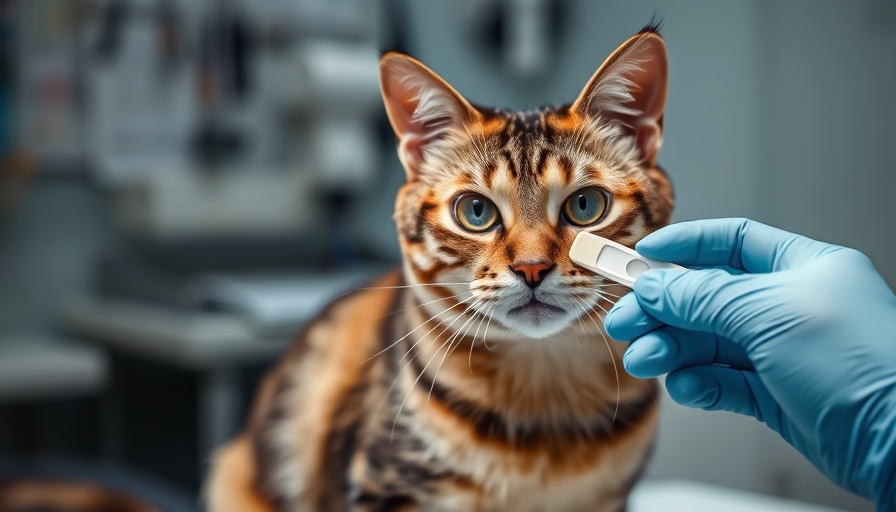
Unlocking the Secrets of Your Pet's Urine
Your pet's urine is more than just a waste product; it provides crucial insights into their overall health. As the end product of the body’s waste removal system, urine reflects what’s happening inside your pet. Regular urinalysis can serve as an early warning system, helping to catch potential health issues that the naked eye might miss. Understanding results from a simple urine test can mean the difference between a healthy, vibrant pet and one that is struggling with undetected health problems.
Why Regular Urinalysis Matters for Pets
Veterinarians recommend that pets undergo a urinalysis at least once a year, particularly for cats and dogs over the age of seven or for those dealing with chronic health issues. This routine check-up complements blood tests but often reveals conditions that bloodwork may overlook. As pet parents, it's essential to grasp why this test should be a staple of our pets’ healthcare:
1. Early Detection of Kidney Issues: One of the primary conditions that a urinalysis can uncover is proteinuria—a sign that the kidneys may not be functioning properly. While it can stem from various causes, persistent proteinuria often indicates serious kidney diseases that could escalate if left unchecked.
2. Uncovering Underlying Infections: Conditions like bacteriuria, or the presence of bacteria in the urine, aren’t typically flagged by standard blood tests. Early identification alerts you to potential infections that could require immediate medical attention.
Three Conditions Only a Urinalysis Can Detect
Let’s delve deeper into conditions that can be diagnosed with a urinalysis:
- Proteinuria: As mentioned earlier, protein in the urine can indicate kidney issues. If your pet's urinalysis shows protein in their urine without signs of inflammation, it’s a red flag, suggesting possible kidney dysfunction that necessitates further investigation and timely medical intervention.
- Fanconi Syndrome: This rare disorder affects how the kidneys respond to glucose and can lead to excessive loss of essential nutrients. A urinalysis can reveal glucose levels indicating this condition, allowing for early treatment.
- Bacteriuria: The majority of urinary tract infections will not show up in blood tests but can be identified through urine samples. Recognizing a UTI promptly ensures effective treatment, preventing potential complications.
Paving the Path Towards Better Health
The importance of routine urinalysis cannot be understated. With today’s advancements in veterinary medicine, these tests are simpler and more accessible. They can save your pet from progressing into more severe health issues that would be far more costly to treat.
Before your next vet visit, consider incorporating urinalysis into your pet’s regular check-up plan. Not only will it help you stay informed about your furry friend’s health status, but it also allows you to be proactive in their care.
What to Expect During a Urinalysis
A comprehensive urinalysis typically includes visual inspection, dipstick tests for pH, protein content, and microscopic evaluation of urine sediments. Your veterinarian may suggest additional tests—like the Bladder Tumor Antigen test—that offer even more detailed insights into your pet’s health.
Making Informed Decisions
Being proactive about your pet's health can extend their lives and improve their quality of living. Understanding the results of a urinalysis can empower you to make informed decisions regarding diet, exercise, and medical care. Keeping track of these results allows for a more personalized pet care strategy.
In conclusion, a simple test can yield profound insights into your pet's health and longevity. Regular urinalysis should be part of every pet owner’s agenda with their veterinarians. By adopting this simple practice, we not only extend our pets’ lives but enhance their overall well-being.
 Add Row
Add Row  Add
Add 




 Add Row
Add Row 


 Add
Add
Write A Comment